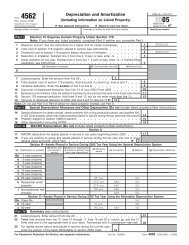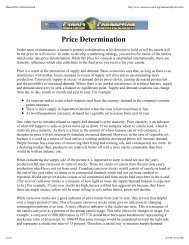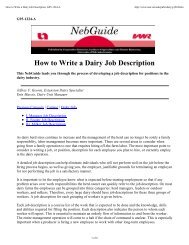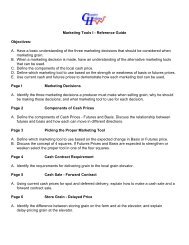Malt Preferences of the Craft Brewing Industry - Agricultural ...
Malt Preferences of the Craft Brewing Industry - Agricultural ...
Malt Preferences of the Craft Brewing Industry - Agricultural ...
You also want an ePaper? Increase the reach of your titles
YUMPU automatically turns print PDFs into web optimized ePapers that Google loves.
Introduction<strong>Malt</strong> barley is an important economic crop to agricultural producers in Wyomingand <strong>the</strong> West. <strong>Malt</strong> barley is an attractive alternative for Wyoming growers because <strong>of</strong> itscompatability with sugar beets in a crop rotation system, as well as <strong>the</strong> cash flowprovided in late August or early September (Bastian et al., 1994). Historically, <strong>the</strong>brewing industry has been <strong>the</strong> major purchaser <strong>of</strong> this commodity. However, <strong>the</strong> growthin demand for beer has been relatively stagnant since <strong>the</strong> 1980’s. The market for maltbarley has become less pr<strong>of</strong>itable for producers in recent years, given <strong>the</strong> flat demand forbeer and <strong>the</strong> increased use <strong>of</strong> barley malt substitutes such as corn and rice by macrobreweries.The investigation <strong>of</strong> alternative markets for this crop is important to maltbarley producers.While <strong>the</strong> demand for beer has been relatively flat, <strong>the</strong> craft brewing industry hasenjoyed growth in market share in recent years. During <strong>the</strong> mid-1980’s approximately90% <strong>of</strong> all U.S. manufactured beer was produced by six major companies. Annualcombined production <strong>of</strong> <strong>the</strong>se megabreweries exceeded 171 million gallons in 1986(Beverage <strong>Industry</strong> Supplement, 1995). Large processors are characterized by efficiency,uniformity, and mass marketing. The product <strong>the</strong>y produce is ra<strong>the</strong>r homogeneous, anddifferentiation occurs primarily through advertising and promotion.<strong>Craft</strong> brewers hold a minute share <strong>of</strong> <strong>the</strong> market as compared to megabreweries,but <strong>the</strong>ir market share is growing rapidly. In 1994, craft brewing comprised 1.3 % <strong>of</strong> <strong>the</strong>beer market. By 1995, <strong>the</strong> market share had increased to 2 %. In 1996, 108 newmicrobreweries and 209 new brewpubs began selling beer in <strong>the</strong> United States. Overall,<strong>the</strong> total number <strong>of</strong> domestic specialty brewing companies exhibited a growth rate <strong>of</strong>1
















